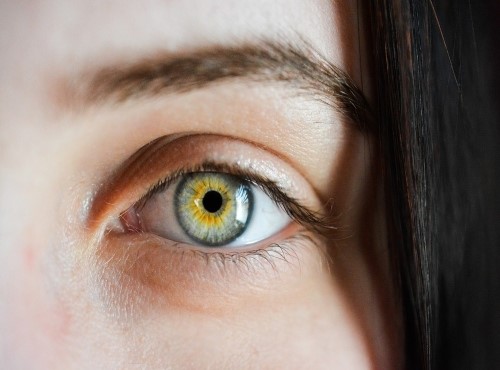by Dr. David Cronauer
Unlike eyeglasses, which require a one-time stipend, contact lenses are the gift that keeps on charging. Between the cleaning solution, lens cases and the lenses themselves, the price for managing visual impairment can be quite costly.
Still, just as it would be ill-advised to not take prescription medications for financial savings, those with a need for prescription lenses should never sacrifice their vision, and instead should look for lenses and cleaning solutions that fit their budget.
Below are some tidbits to consider in your decision-making process for picking the right type of contact lens and seeking the best bargains. These facts will help you ask the right questions to your eye doctor and reduce your contact lens expense.
Daily Wear Lenses versus Extended Wear Lenses
First you may be wondering if you should buy daily wear lenses or extended wear lenses.
Daily wear lenses require an investment in more singular lenses, while extended wear lenses involve only one purchase over the time span of a month. However, the cost of losing an extended lens is much greater than the loss of a single daily lens, which can easily (and inexpensively) be replaced. These daily wear lenses are also more convenient and cost-efficient for people that do not regularly wear contact lenses and are looking to toss them out after wearing them for only a few hours.
Conversely, extended wear contact lenses are made from a thicker, typically sturdier material that is less likely to shatter and leave you contact-less and in need of purchasing a replacement. These reliable lenses are strongly recommended for those with vision-dependent careers.
Daily wear lenses are the healthiest alternative for your pocketbook because they are much less likely to continually support protein and calcium build-up and bacteria. The bacteria and protein build-up can grow between the lens of an extended wear contact and the eyeball.
Long-term implications of these build-ups can be costly, especially if infections or more serious eye diseases occur as a result. These occurrences are extremely likely under circumstances where you are constantly sleeping with your extended wear lenses still in place. This may mean added trips to the eye doctor, which of course means additional, unplanned time off of work.
Soft Contact Lenses versus Hard Contact Lenses
The cost to manufacture soft contact lenses is much cheaper than the cost to manufacture hard contact lenses. Hard contact lenses are also known as RGP (Rigid Gas Permeable] lenses. As a result, soft lenses are much cheaper to replace as compared with hard lenses that are prone to cracking. The choice between these two types of lenses, incidentally, should be primarily determined by one’s health needs before cost – especially in cases where a person has astigmatism.
Is it Cheaper to Wear Daily Lenses or Extended Wear Lenses?
Unfortunately, there is a slightly higher cost for wearing daily lenses as compared to weekly or monthly wear contacts, although this cost is considered insignificant in a grander scheme of contact-related costs. Daily disposable wearers are estimated to spend roughly $200 more per year than those that switch out lenses every two weeks.
This money is spent almost entirely on additional contacts, and does not include a comparison with cleaning supply cost associations with extended wear lenses. In total, costs for daily disposables are estimated at around a dollar per day. Considering that these lenses do not require the purchase of additional cleaning supplies, the purchase of daily lenses may even make them the more cost-efficient alternative overall.
Intraocular Lenses
Intraocular lenses are surgically (and therefore permanently) attached to the eye to replace a deteriorated crystalline lens. While the procedure is uncommon for people with basic visual impairment, others opt to have the fairly simple procedure done to eliminate not just the annoyance of inserting contact lenses regularly, but for the purpose of saving money over the course of a lifetime. The downside to the procedure includes a two to three week recovery period, which means you may be home-ridden for a period of time following the procedure.
Indirect Contact Lens Costs
One might also consider that indirect costs come along with contact lenses. Buying monthly lenses means not only investing money in cleaning products, but investing your one natural valuable resource: time. Daily lenses, which are thrown out after use, require less maintenance and, as such, is less time spent in the morning before work cleaning and situating contact lenses. Pop them in and go, and you may not find yourself quite as late for work. This may be the absolute deciding point for contact wearers.
(Dr. David Cronauer works for ReplaceMyContacts.com, an online retailer of cheap contact lenses such as Freshlook Dimensions and Proclear Toric. He is a graduate of Wilkes University Pennsylvania College of Optometry where he received his Doctor of Optometry degree. Dr. Cronauer is certified in the treatment and management of ocular disease and specializes in vision-related problems for head injury and stroke victims.)




Lenses are a big thing for everyone these days. I personally love them! Buying them online is even better.